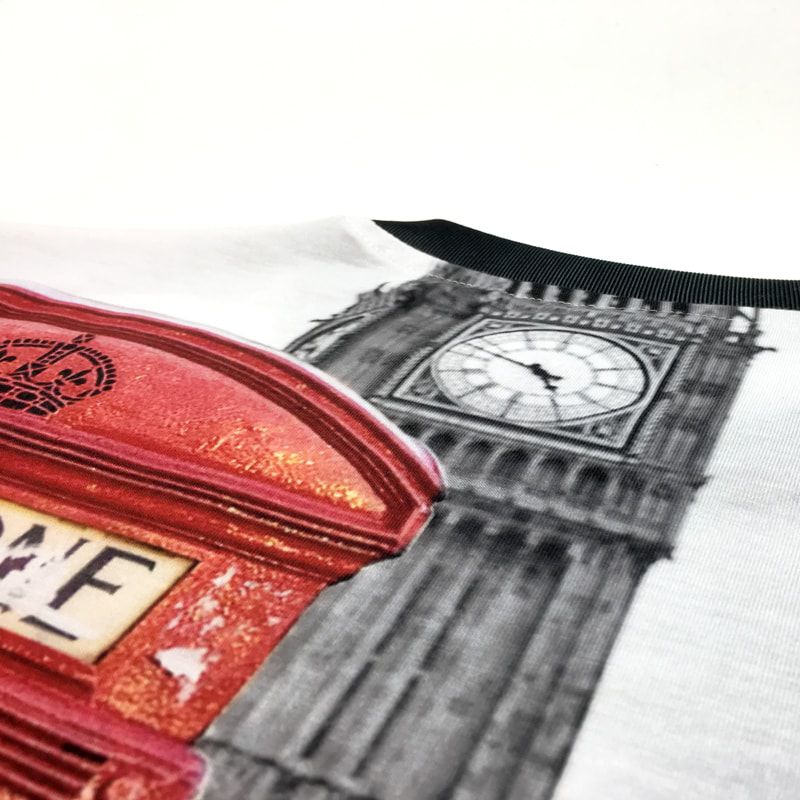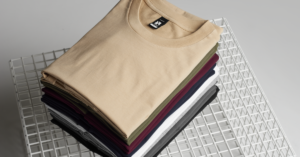In this post, I’m going to take a look at our sublimation printing process and discuss why it’s a brilliant, eco-friendly printing technique. But, in order to understand why this technique is so good, it’s important to firstly understand exactly what Sublimation Printing is.
What is sublimation printing?
Sublimation is a heat transfer process which is simple to do and it also creates bright, vivid designs that can be printed all over the fabric. This gives you the ultimate freedom when you’re creating your design and that’s why it’s a favourite and a regularly used technique in the fashion and art world.
The printing technique uses heat activated dyes which are used to transfer the ink to the textile using the process of turning molecules from a solid into a gas state, without having to move through the liquid state first. During this process, the heat is applied to the dye which converts it into a gas form. At the same time, the dye then makes contact with a synthetic material (such as polyester) and, upon exposure to the heat, the fibres in the material open up and allow the dye to permeate into the fibre and then create a permanent bond.
The prints are therefore transferred from the source into the textile.
WHAT TEXTILES CAN BE USED?
Sublimation printing gets the best results when it’s used on synthetic materials – such as polyester. This is due to a number of different factors. The most important reason is because of the high temperatures that are used within the process that the material is exposed to in order to transfer the dye from the source to the garment. Fabrics, such as nylon, can’t withstand the heat and will end up melting during the process due to the high temperatures.
It is possible to use Dye Sublimation (also known as All Over T-Shirt Printing) on other materials, such as cotton, and other natural fabrics, however, the results won’t look as bright and may eventually fade and look dull over time.
The printing process will also work better with an industrial heat press as it provides the fabric and the dye with a consistent heat and the correct amount of pressure to ensure that the print remains full and bright.
So, what makes sublimation so eco-friendly?
So far, Sublimation Printing probably sounds like the best printing technique available. You can create all over designs and the ink remains bright and vivid to create some truly awesome prints. It gets better though as dye sublimation is also an environmentally conscious design process.
Firstly, the printing technique results in minimum waste as no dye will get into the water system – something which can happen with many other dyeing processes.
Also, the same sublimation print can be used multiple times to print on more than just the one garment. This is a process which is called exhaust printing. Although subsequent prints will reduce in intensity, it will still work for a number of pieces and this will create its own unique effect.
There are, of course, some downsides to this printing technique – as there are with all techniques. The biggest downside is the limited number of materials that the printing technique will work on. Also, polyester (the best material for this printing technique) isn’t exactly known for being the most eco-friendly. You could, however, find a way around this by used recycled polyester to make the process more eco-friendly.
WRAP UP:
Overall, sublimation printing is a brilliant technique which offers you excellent, bright and vivid colouring in a beautiful all over design. By using sublimation printing, you can also create epic designs using a single dye – which is known as exhaust printing.
The printing technique is eco-friendly – however, the choice of garments that you can use are limited and the material choices aren’t the most eco-friendly options available.
If you’re looking to create fashionable T Shirts, or if you’re looking to create garments with a striking, eye-catching design – I would recommend using Dye Sublimation to create your clothing range due to the reasons above. If you’re thinking about creating your own clothing range and need more advice on how to get started, fill out the quote form below.





